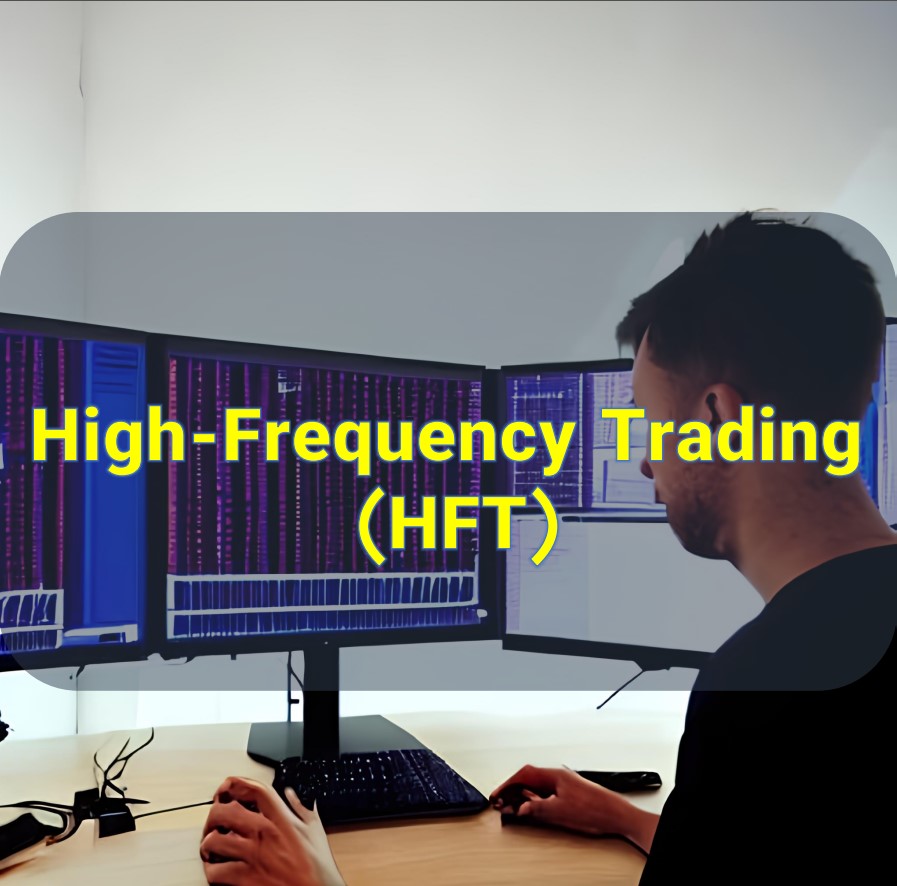Stop hunting, in the context of trading, refers to a practice where market participants deliberately push the price of a financial instrument to trigger stop-loss orders placed by other traders. The goal of stop hunting is to force these traders out of their positions, creating a temporary imbalance in supply and demand and potentially allowing the manipulators to enter or exit positions at more favorable prices.
Here’s how stop hunting typically works:
1. Stop-Loss Orders: Traders often use stop-loss orders to limit their potential losses. A stop-loss order is an instruction to sell a security if it reaches a certain price below the current market price. These orders are commonly placed just below significant support levels or above resistance levels.
2. Identification of Stop-Loss Levels: Manipulative traders or large institutional players may identify clusters of stop-loss orders located near key technical levels, such as round numbers or previous swing lows/highs.
3. Price Manipulation: To trigger these stop-loss orders, the manipulators intentionally push the price of the instrument in the opposite direction, often with the use of substantial trading volume or coordinated actions. This sudden price movement may deceive traders into believing that the market sentiment has changed or that a breakout is occurring.
4. Stop-Loss Execution: As the price reaches the predefined stop-loss levels, the stop-loss orders are triggered and automatically executed as market sell orders. This influx of selling pressure can drive the price further down or trigger a cascading effect, leading to a more significant price decline.
5. Reversal and Profit: After the stop-loss orders are triggered, the manipulators may reverse their initial price action, causing the price to rebound. This allows them to enter or exit positions at more favorable prices, profiting from the temporary imbalance in supply and demand.
It’s important to note that stop hunting is generally regarded as an unethical and manipulative trading practice. It can create market distortions and harm individual traders who are caught in these traps. Regulators and exchanges have implemented measures to detect and prevent such activities, but they can still occur, particularly in less regulated or manipulated markets. Traders should be aware of the potential risks associated with stop hunting and consider employing risk management strategies that account for this possibility.
The connection between stop hunting and stop loss orders
Stop hunting is directly related to stop-loss orders. Stop-loss orders are a risk management tool used by traders to limit their potential losses on a trade. These orders are typically placed below the current market price when buying a security or above the market price when selling.
Stop hunters exploit the presence of stop-loss orders in the market. They intentionally push the price of a financial instrument in a certain direction to trigger these stop-loss orders. By triggering the stop-loss orders, the stop hunters create a surge of selling (or buying) activity as traders are forced to sell (or buy) at the stop-loss price.
The primary objective of stop hunting is to create a temporary imbalance in supply and demand, often leading to a significant price movement. When a large number of stop-loss orders are triggered, it can amplify the price action and cause the price to move further in the direction favored by the stop hunters. This allows them to take advantage of the forced selling or buying and potentially enter or exit positions at more favorable prices.
In essence, stop hunters exploit the predictable behavior of traders who have placed stop-loss orders at specific price levels. They aim to trigger these orders and create a short-term market imbalance that benefits their own trading strategy.
It’s worth noting that stop hunting is considered an unethical and manipulative practice. It can lead to market distortions and harm individual traders who become victims of these manipulative tactics. Traders should be aware of the risks associated with stop hunting and consider implementing additional risk management measures beyond simple stop-loss orders to protect their positions.
How to identify stop loss orders during stop hunting
Identifying stop-loss orders during stop hunting can be challenging since these orders are typically not publicly visible. However, there are some strategies and techniques that traders use to try to identify potential areas where stop-loss orders might be clustered. Here are a few approaches:
1. Technical Analysis: Traders often use technical analysis to identify key support and resistance levels on price charts. Stop-loss orders are commonly placed just below support levels or above resistance levels. By analyzing historical price data and identifying these significant levels, traders can make educated guesses about where stop-loss orders might be located.
2. Order Book Analysis: Analyzing the order book, which shows the current buy and sell orders in the market, can provide some insights into potential stop-loss order clusters. Large sell orders placed just below key support levels or large buy orders above resistance levels may indicate the presence of stop-loss orders.
3. Price Volatility and Breakouts: Stop hunting often occurs during periods of heightened price volatility or when a breakout is anticipated. Traders may intentionally push the price to trigger stop-loss orders near these volatile periods or breakout levels. By monitoring price movements and observing sudden spikes or reversals, traders can try to identify potential stop-loss hunting activities.
4. Market Manipulation Patterns: Experienced traders may develop a sense of market manipulation patterns through careful observation and analysis. They look for abnormal price movements or suspicious trading activities that indicate deliberate attempts to trigger stop-loss orders. These patterns can be identified by studying historical price data and recognizing recurring behaviors.
5. Market Sentiment Analysis: Traders can monitor market sentiment through various indicators, news, and social media platforms. If there is a widespread consensus or discussion about a specific price level where many traders have placed their stop-loss orders, it may increase the likelihood of stop hunting activities targeting those levels.
6. Price Rejections and False Breakouts: Stop hunters may attempt to trigger stop-loss orders by creating false breakouts or price rejections at key technical levels. Traders can look for instances where the price briefly moves beyond a support or resistance level but fails to sustain the breakout or is quickly reversed. This could indicate a potential stop hunting attempt.
7. Volume Spikes and Abnormal Trading Activity: Unusual spikes in trading volume or abnormal trading patterns can sometimes hint at stop hunting activities. If there is a sudden surge in volume accompanied by significant price movements, it may indicate the presence of stop-loss orders being triggered.
8. Market Depth Analysis: Traders can analyze the market depth, which shows the pending buy and sell orders at different price levels. By observing sudden changes in the market depth, such as a significant increase in sell orders at specific price levels, traders may infer the presence of stop-loss orders being targeted.
9. Personal Experience and Intuition: Experienced traders who have encountered stop hunting in the past may develop a sense or intuition for potential stop-loss order clusters. They may recognize recurring patterns, behaviors, or price levels that are commonly targeted during stop hunting. This intuition comes with time and experience in actively participating in the markets.
It’s important to remember that identifying stop-loss orders during stop hunting is not an exact science. The intentions and actions of market participants can be complex and difficult to predict. Traders should combine multiple analysis techniques, exercise caution, and implement robust risk management strategies to mitigate the risks associated with stop hunting.
An example about stop hunting trading
Suppose there is a heavily traded stock, ABC Inc., that has been trading in a range between $50 and $55 per share. Many traders have placed stop-loss orders just below the support level at $50, intending to exit their positions if the price drops below that level.
A group of manipulative traders believes that there are a significant number of stop-loss orders clustered just below $50. They aim to trigger those orders and potentially profit from the ensuing price decline. Here’s how the scenario might unfold:
1. Manipulative Intent: The group of manipulative traders identifies the support level at $50 as a potential area with a concentration of stop-loss orders. They believe that triggering those orders will lead to a sharp price decline.
2. Price Manipulation: The manipulative traders begin selling a large volume of shares of ABC Inc., pushing the price down towards the support level at $50. Their goal is to breach that level and trigger the stop-loss orders.
3. Stop-Loss Order Execution: As the price of ABC Inc. approaches $50, the stop-loss orders placed by other traders are triggered. These orders are automatically executed as market sell orders, adding further selling pressure to the market.
4. Price Decline: The influx of selling from the triggered stop-loss orders causes the price of ABC Inc. to drop below $50. This price decline may be amplified as more stop-loss orders are triggered, leading to a significant downward movement in the stock’s price.
5. Reversal and Profit: Once the stop-loss orders have been triggered and the price of ABC Inc. has declined, the manipulative traders may reverse their strategy. They start buying shares at the lower price levels, taking advantage of the temporary imbalance in supply and demand. As they accumulate shares, the price of the stock may start to recover.
6. Profit Realization: Eventually, the manipulative traders exit their positions by selling the shares they acquired during the price decline. They may choose to sell at a higher price when the stock rebounds, generating a profit from the manipulation.
It’s important to note that stop hunting is considered unethical and is prohibited in regulated markets. Regulators and exchanges have measures in place to detect and prevent such activities. However, in less regulated or manipulated markets, stop hunting can still occur, posing risks to individual traders who may be caught in these manipulative traps. Traders should be aware of the potential for stop hunting and employ risk management strategies to mitigate its impact on their trading activities.
Entry and exit rules and conditions when the market trend is up
When the market trend is up, traders often look for opportunities to enter and exit positions in alignment with the upward movement. Here are some common entry and exit rules and conditions to consider:
Entry Rules
1. Breakout Above Resistance: Look for a breakout above a significant resistance level or a previous swing high. This can indicate a potential continuation of the upward trend. Confirm the breakout with increased volume and positive price momentum.
2. Pullbacks and Retracements: Enter on pullbacks or retracements within the upward trend. Wait for the price to retrace to a support level or a moving average before entering a long position. Look for signs of price stabilization, such as bullish candlestick patterns or bullish reversal indicators.
3. Trendline Breakouts: Identify an upward trendline connecting higher swing lows. Enter when the price breaks above the trendline, signaling a continuation of the upward trend. Confirm the breakout with other technical indicators or patterns.
4. Moving Average Crossovers: Use a combination of moving averages, such as a shorter-term (e.g., 20-day) and a longer-term (e.g., 50-day) moving average. Enter when the shorter-term moving average crosses above the longer-term moving average, indicating upward momentum.
Exit Rules
1. Profit Targets: Set profit targets based on technical levels, such as resistance zones or Fibonacci extensions. Take partial profits as the price reaches these targets to secure gains while allowing the remaining position to ride the upward trend.
2. Trailing Stops: Implement trailing stops to protect profits and capture further upside potential. Adjust the stop-loss level periodically as the price continues to move in favor of the trade. This allows for potential profits while also managing risk.
3. Reversal Patterns: Watch for bearish reversal patterns or signs of weakening upward momentum. If the price shows signs of a potential trend reversal, consider exiting the position to avoid potential losses.
4. Moving Average Crossovers: Consider exiting the position when the shorter-term moving average crosses below the longer-term moving average, indicating a potential change in trend.
5. Volatility-based Exits: Set stop-loss orders based on the volatility of the market or the specific security. Utilize indicators such as Average True Range (ATR) to adjust stop-loss levels accordingly, considering the market’s volatility.
Remember, trading decisions should be based on a comprehensive analysis of market conditions, technical indicators, and risk management principles. It’s important to adapt these rules and conditions to your specific trading strategy and preferences while considering your risk tolerance and overall market sentiment.
Rules and conditions of entry and exit in the downward trend of the market
When the market trend is downward, traders typically seek opportunities to enter and exit positions in alignment with the downward movement. Here are some common entry and exit rules and conditions to consider during a downward market trend:
Entry Rules
1. Breakdown Below Support: Look for a breakdown below a significant support level or a previous swing low. This can indicate a potential continuation of the downward trend. Confirm the breakdown with increased volume and negative price momentum.
2. Pullbacks and Retracements: Enter on pullbacks or retracements within the downward trend. Wait for the price to retrace to a resistance level or a moving average before entering a short position. Look for signs of price stabilization, such as bearish candlestick patterns or bearish reversal indicators.
3. Trendline Breakdowns: Identify a downward trendline connecting lower swing highs. Enter when the price breaks below the trendline, signaling a continuation of the downward trend. Confirm the breakdown with other technical indicators or patterns.
4. Moving Average Crossovers: Use a combination of moving averages, such as a shorter-term (e.g., 20-day) and a longer-term (e.g., 50-day) moving average. Enter when the shorter-term moving average crosses below the longer-term moving average, indicating downward momentum.
Exit Rules
1. Profit Targets: Set profit targets based on technical levels, such as support zones or Fibonacci extensions. Take partial profits as the price reaches these targets to secure gains while allowing the remaining position to benefit from the downward trend.
2. Trailing Stops: Implement trailing stops to protect profits and capture further downside potential. Adjust the stop-loss level periodically as the price continues to move in favor of the trade. This allows for potential profits while managing risk.
3. Reversal Patterns: Watch for bullish reversal patterns or signs of weakening downward momentum. If the price shows signs of a potential trend reversal, consider exiting the position to avoid potential losses.
4. Moving Average Crossovers: Consider exiting the position when the shorter-term moving average crosses above the longer-term moving average, indicating a potential change in trend.
5. Volatility-based Exits: Set stop-loss orders based on the volatility of the market or the specific security. Utilize indicators such as Average True Range (ATR) to adjust stop-loss levels accordingly, considering the market’s volatility.
It’s important to note that trading decisions should be based on a comprehensive analysis of market conditions, technical indicators, and risk management principles. Adapt these rules and conditions to fit your specific trading strategy and preferences, while considering your risk tolerance and overall market sentiment. Additionally, always consider using proper risk management techniques to protect your capital.







